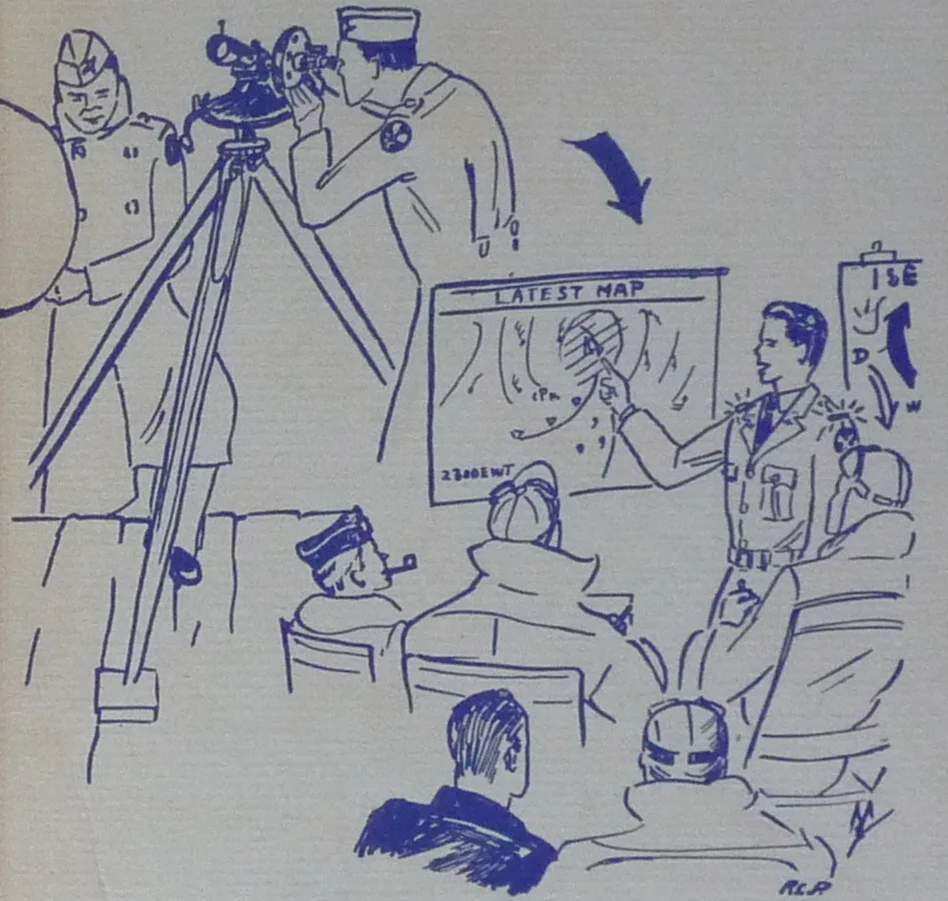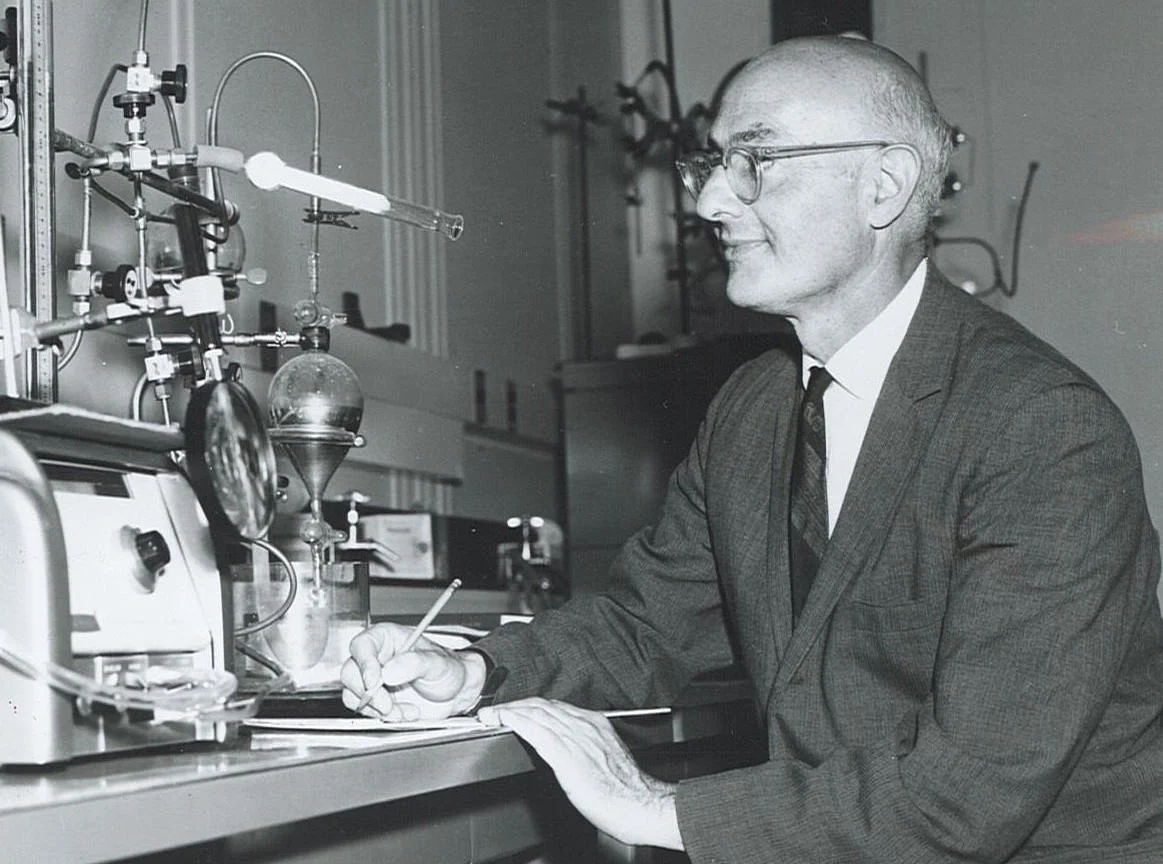Caltech's Fabulous Weather Factory: 1949-71
After the first Phytotron was constructed at Caltech, they became an important research tool worldwide.
This is a guest post by David P. D. Munns, an associate professor of history at John Jay College. You can read all about the history of phytotrons in David’s new book, Engineering the Environment: Phytotrons and the Quest to Control Climate in the Cold War (University of Pittsburgh Press, 2017). His delightful blog is http://www.worldoftrons.com.
The suffix –tron is useful for understanding that strange period of peace lined by imminent nuclear annihilation called the Cold War. Beginning with Ernest Lawrence’s cyclotron in the 1930s, massive, high-energy machines began appearing at research centers. Designed to control sub-atomic particles, these –trons of physics came to symbolize the authority and prestige of physicists at the dawn of the nuclear age.
In 1949, Caltech built the “Earhart Plant Research Laboratory,” a new kind of environmentally controlled greenhouse designed by Frits Went, one of the most significant plant scientists of the twentieth century.
Frits Went in 1949. Even a foremost plant scientist of the 20th century looks spooky when illuminated from below.
Almost immediately after the Earhart Laboratory opened, however, it received a new cognomen. Went’s fellow plant physiologist James Bonner recalled the story in the early 1980s:
[M]y first postdoctoral fellow [Sam Wildman] and I, sitting around about 1950, having coffee, decided it deserved a better or more euphonious name [...]. We decided to call it a phytotron—phytos from the Greek word for plant, and tron as in cyclotron, a big complicated machine. Went was originally enormously annoyed by this word. But Dr. Millikan took it right up saying, ‘this edifice financed by Mr. Earhart, is going to do for plant biology what the cyclotron has done for physics,’ and he christened it a “phytotron”. [2]
If Went was annoyed, it quickly passed: within a matter of months, Went had specifically told Caltech’s own magazine that the “similarity between the term phytotron and such terms as betatron, synchrotron, cyclotron, and bevatron is intentional.”[3] In fact, over the following decade Went clearly came to the conclusion that the incorporation of the suffix –tron into the plant sciences courtesy of Robert Millikan, spoke to the secret heart of many life scientists. Went himself noted privately “the awe in which biologists hold physicists.”[4]
Caption: Phytotrons allowed scientists to claim total control of a plant’s environment. In the first phytotrons each individual room was held at a constant unique temperature. The Australian phytotron, for example, had rooms maintaining 9°C, 12°C, 16°C, 20°C, 23°C, 26°C, 30°C, 34°C.
In the coming decades, many more giant computer-controlled environmental laboratories were built around the world. Phytotron became a general term for a building with any number of rooms or smaller cabinets all able to produce any set of climatic conditions. To plant scientists, the controlled conditions granted over the experimental environment by the phytotron was important because the growth and development of any organism depends on its genes and its environment. Plant scientists required the ability to produce reproducible climates in order to conduct experiments that tested plants’ (and some animals’ in the later Biotron) responses to various environmental conditions. What they produced was a stable regular climate and a stable regular plant. The phytotronist regularly chanted the mantra that phytotrons were the cyclotrons of biology, and they would “dissect the mechanisms of the plant as the cyclotron had the atom.”[5]
The next generation of phytotrons expanded in technological reach, in their ranges of environmental variables, and also in the degree of control over each variable. A phytotron in Stockholm offered a humidity controlled room and a custom built computer, as well as a low temperature room that extended the temperature range down to -25°C for the study of Nordic forests, similar to the Australian example shown here.
Still in use today, phytotrons became an icon of a new Cold War Big Biology that mirrored the era’s Big Physics, imitating the physical sciences’ expansion of instruments, commitment to pure and interdisciplinary research, and its big teams and bigger budgets.
The suffix -tron also signals the centrality of modernism to postwar science. Trons represent an era that demanded control—over nature, over populations, and ultimately control over minds and thoughts—and put its hope for that control in technology. Trons evoke a people that sought security and salvation in machines and systems, and saw climate as one more system that could be controlled by technology.
Early phytotron experiments observed the effects on potato plants of varying the daytime versus the nighttime temperature.
Sources:
[1]. Letter from Frits Went to Beadle. July 31, 1948. Biology Division papers, file 27.11. Archives. California Institute of Technology. Confirmed with DuBridge, Aug 4, 1948. Biology Division papers, file 27.11. Archives. California Institute of Technology.
[2]. James Bonner. Interview by Graham Berry. Pasadena, California, March 13-14, 1980. Oral History Project, California Institute of Technology Archives. Retrieved Jan 5, 2014 from the World Wide Web: http://resolver.caltech.edu/CaltechOH:OH_Bonner_J, p. 17-18. A similar account was given by Bonner in response to a query by George Beadle about the origin of “phytotron.” As Bonner told him, “at a morning coffee session in the old Greasy Spoon at Caltech […] Sam and I started out with the hypothesis that anything as fancy as the proposed Earhart Laboratory shouldn’t be called an air-conditioned greenhouse or anything simple like that, but should have a more magnificent name. We ended up with “thermophotophytotron” but quickly slimmed it down to “phytotron.” Letter from Bonner to Beadle. Sept 9, 1970. James Bonner papers. File 20.1. Archives. California Institute of Technology.
[3]. Frits Went, ‘The Phytotron,’ Engineering and Science 12:9 (1949): 3-6, 3
[4]. Frits Went Diary, Sept 1, 1962. Frits Went papers. Record Group 3/2/6, box 22. Archives. Missouri Botanical Garden.
[5]. Henry Augier, Henry, Phytotrons et phytotronique: la bioclimatologie expérimentale (Marseilles, Centre Regional de Documentation Pedagogique, 1972), 4.
[6]. California Institute of Technology, The President’s Report 1948-49 (California Institute of Technology, 1950), 6-7.
Image Sources:
‘What can a Phytotron do for Australia,’ From “What is Needed for an Australian Phytotron?” March 28, 1958. National Archives of Australia, Series A4940, file C2060. Courtesy of the National Archives of Australia.
Portrait of Frits Went: ‘The Phytotron,’ Engineering and Science 12:9 (1949): 3.
Plan of the proposed Australian phytotron. From “What is Needed for an Australian Phytotron?” March 28, 1958. National Archives of Australia, Series A4940, file C2060. Courtesy of the National Archives of Australia.
‘Glasshouse of phytotron CSIRO, Canberra.’ 1967. NAA Series A1200, L66896. Courtesy of the National Archives of Australia.
Experimental Potatoes, from Frits Went, The Experimental Control of Plant Growth, plate XII. Reproduced with permission from John Wiley & Sons, Ltd.









